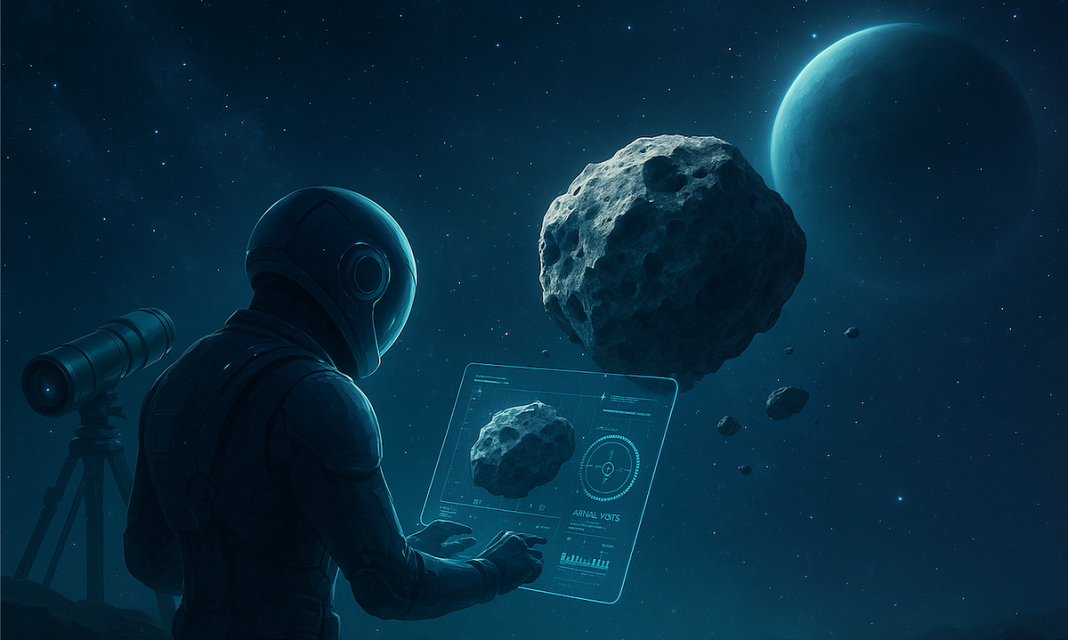Imagine peering into the vast, silent expanse of space, knowing that countless mysteries float just beyond our gaze. But what if some of those mysteries didn’t just float by, but actually paid us a visit? This isn’t science fiction; it’s the intriguing reality that Harvard Professor Avi Loeb and his colleagues are investigating, forever changing how we think about cosmic visitors and sparking a profound shift in scientific inquiry.
When the Cosmos Knocks: Interstellar Anomalies Arrive
For centuries, the idea of objects traveling between star systems was largely theoretical. Then, in 2017, everything changed. A truly bizarre object, dubbed ‘Oumuamua, zipped through our solar system. Its elongated shape, lack of a cometary tail, and most puzzling, its inexplicable acceleration away from the Sun baffled astronomers. It didn’t behave like any comet or asteroid we’d ever seen.
Then came another intriguing puzzle: the Interstellar Meteor 1 (IM1). Discovered by U.S. Space Command in 2014 but only recently confirmed as interstellar, IM1 crashed off the coast of Papua New Guinea. Its incredibly high speed and material strength, far exceeding typical space rocks, suggested it was unlike anything formed within our own solar system. Both ‘Oumuamua and IM1 stand as stark reminders that the universe holds surprises, and some of them come bearing extraordinary characteristics.
Avi Loeb and the Galileo Project: Daring to Ask “What If?”
Enter Avi Loeb, a renowned astrophysicist who isn’t afraid to challenge conventional wisdom. While many scientists searched for purely natural explanations for these anomalies, Loeb dared to ask a bolder question: What if some of these interstellar objects aren’t natural at all, but rather technological artifacts? It’s a provocative hypothesis, one that has ignited intense debate and, critically, inspired a new direction for scientific exploration.
Loeb champions the idea that extraordinary claims require extraordinary evidence, but also that we must be open to seeking that evidence. This conviction led him to establish the Galileo Project. This ambitious initiative aims to systematically search for and study interstellar objects, employing advanced telescopes, sensors, and even ocean expeditions (like the recent one to retrieve fragments of IM1). The goal isn’t just to identify their origin, but to understand their nature, no matter how unconventional the answer might be. As one curious observer put it, “It’s exhilarating to think we might be on the cusp of truly unprecedented discoveries. Even if it’s not aliens, we’re learning so much about the universe’s quirks!”
The Dawn of a New Cosmic Detective Story
Avi Loeb’s work isn’t just about finding potential alien technology; it’s about reigniting a spirit of open-minded inquiry and pushing the boundaries of scientific investigation. By daring to entertain possibilities that challenge established paradigms, he’s encouraging a more proactive, empirical approach to cosmic mysteries. The arrival of interstellar objects like ‘Oumuamua and IM1 has transformed space exploration from a passive observational science into an active, detective-like quest. We are no longer just looking out; we are actively searching for what might be coming in.
The science revolution sparked by these interstellar objects and the audacious minds like Avi Loeb’s is just beginning. What we discover next could reshape our understanding of the universe, our place within it, and perhaps, even the very definition of life itself. The cosmos is vast, and our journey to comprehend its wonders has just become infinitely more exciting.
*




